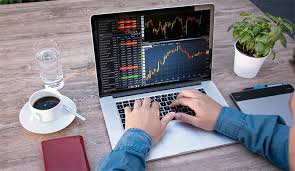
The Evolution of Forex Algorithmic Trading: Strategies for Success
In the fast-paced world of financial markets, forex algorithmic trading Trading Asia has emerged as a significant player, especially in the realm of forex algorithmic trading. As traders seek to leverage technology for enhanced efficiency, algorithmic trading has evolved into a vital tool for forex traders around the globe.
What is Forex Algorithmic Trading?
Forex algorithmic trading refers to the use of computer algorithms to automate the trading process in the foreign exchange market. These algorithms are designed to follow pre-set rules for trading. These rules can involve various technical indicators, price movements, or market conditions. By using algorithms, traders can efficiently execute trades, minimize human errors, and quickly respond to market changes.
The History of Forex Trading Automation
The rise of algorithmic trading traces back to the early 1970s when computers became mainstream. Initially, trading strategies were computationally simple. Over the years, advancements in technology have allowed for more complex algorithms that can process vast amounts of data and execute trades in milliseconds.
By the late 1990s, internet trading became prevalent, enabling a broader audience to access the forex markets. Algorithmic trading gained traction in the early 2000s, particularly with hedge funds and institutional investors who sought to capitalize on high-frequency trading opportunities.
How Algorithmic Trading Works in Forex
Algorithmic trading in Forex involves multiple steps. Firstly, a trader or programmer develops a trading strategy based on specific criteria. This strategy is then coded into a trading algorithm. The algorithm continuously monitors the market for a defined set of parameters, such as price movements, volumes, or volatility.
Once the parameters are met, the algorithm automatically executes buy or sell orders without human intervention. This speed and efficiency can be advantageous, particularly in a market as dynamic as forex, where time is often of the essence.
Advantages of Forex Algorithmic Trading
Forex algorithmic trading offers several significant advantages:
- Speed: Algorithms can analyze markets and execute trades much faster than a human trader.
- Accuracy: Automated trading reduces the potential for human error, ensuring trades are executed precisely according to the predefined strategy.
- Emotionless Trading: Algorithms trade based on data and predefined rules, eliminating emotional biases that can lead to poor decision-making.
- Backtesting: Traders can test their strategies against historical data to evaluate performance before applying them in live markets.
- Diversification: Traders can deploy multiple algorithms simultaneously, allowing them to diversify their trading strategies and manage risk.

Challenges in Forex Algorithmic Trading
Despite its advantages, forex algorithmic trading is not without challenges. One significant issue is the reliance on technology. Technical failures, network disruptions, or software bugs can lead to substantial financial losses.
Moreover, developing a successful algorithm requires a deep understanding of both programming and trading concepts. Traders need to be proficient in quantitative analysis and programming languages commonly used in trading, such as Python or R.
Common Strategies Used in Forex Algorithmic Trading
Various strategies have emerged in the realm of forex algorithmic trading. Some common approaches include:
- Mean Reversion: This strategy is based on the idea that prices will revert to their mean over time. Algorithms identify overbought or oversold conditions and execute trades accordingly.
- Trend Following: Algorithms using this strategy analyze price trends, entering long positions when prices are rising and short positions when they are falling.
- Arbitrage: This strategy seeks to exploit price discrepancies between different forex markets or instruments, executing simultaneous trades to profit from these differences.
- Market Making: Algorithms provide liquidity to the market by placing buy and sell orders, profiting from the bid-ask spread.
How to Get Started in Forex Algorithmic Trading
For those interested in entering the world of forex algorithmic trading, several steps can be taken:
- Educate Yourself: Familiarize yourself with Forex trading principles, technical analysis, and programming languages.
- Develop a Trading Strategy: Create a clear trading strategy based on data analysis and backtesting.
- Choose a Suitable Trading Platform: Select a trading platform that supports algorithmic trading, such as MetaTrader or other specialized platforms.
- Start Small: Begin with a demo account or small trades to test your algorithm before scaling up.
Conclusion
The landscape of Forex trading has transformed dramatically with the advent of algorithmic trading. Traders who leverage algorithms can experience enhanced efficiency and profitability in their trading endeavors. However, it also requires a solid understanding of both trading principles and programming skills to develop and implement successful algorithms.
As technology continues to evolve, the potential for innovation in forex algorithmic trading is boundless, opening up exciting opportunities for traders worldwide.
